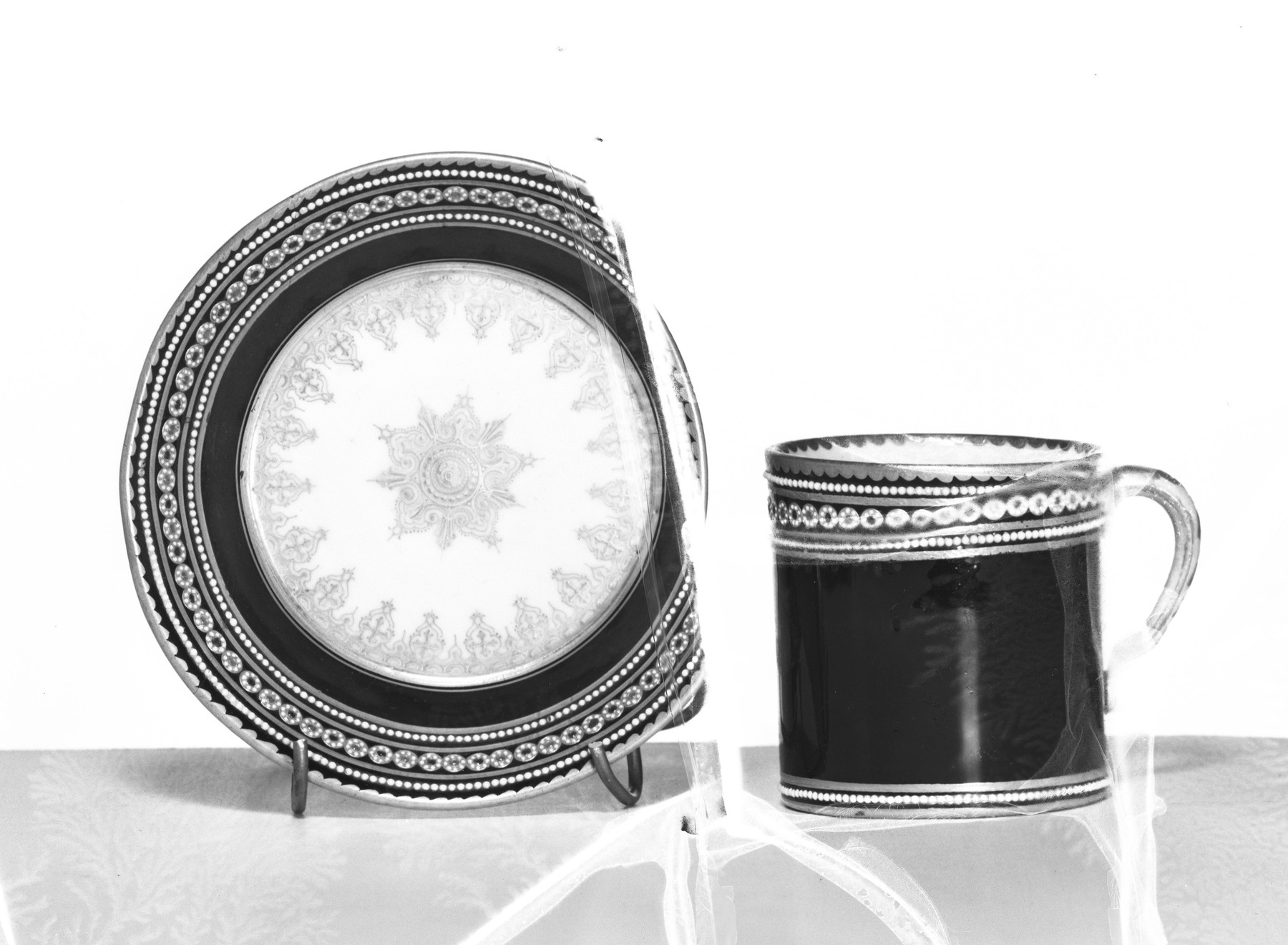Cup and Saucer (gobelet ‘litron’ et soucoupe)
This single-handled, cylindrical cup and deep saucer is an example of jeweled ware that Sèvres began to produce around 1773. Referred to as “emaillée” (enameled) or as “en emaux” (in enamel), these porcelain wares were “show sets” rather than useful wares. Both the cup and saucer are ornamented with faux pearls and are ringed with a repeating pattern of gilt-framed green and red opaque enamel dots resembling small emeralds and rubies. Porcelain sets decorated like this one were widely collected and displayed by European royalty and aristocrats. “Litron” cups would typically be used to consume hot beverages such as tea, coffee, and drinking chocolate; owning and displaying a litron cup without an intended use was a material display of power and wealth. The word “litron” refers to a wooden cup (9.4 cm high and 10.3 cm in diameter) used in the 17th century as the standard measure of grain, flour, salt, and peas. While this particular gobelet ‘litron’ does not conform to these proportions, its cylindrical shape recalls the old wooden vessel.
Inscription
Geographies
France, Sèvres (Place of Origin)
Measurements
Cup (A) H: 2 3/8 × W with handles: 3 × D: 2 5/16 in. (6 × 7.6 × 5.8 cm); Saucer (B) H: 1 1/8 × Diam: 4 3/16 in. (2.8 × 10.7 cm); Overall Cup & Saucer (A & B) H: 2 7/16 × Diam: 4 3/16 in. (6.2 × 10.7 cm).
Location in Museum
Not on view
Accession Number
In libraries, galleries, museums, and archives, an accession number is a unique identifier assigned to each object in the collection.
In libraries, galleries, museums, and archives, an accession number is a unique identifier assigned to each object in the collection.
48.676


